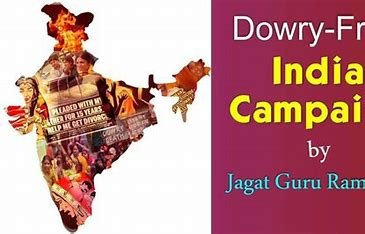- A recent World Bank study analyzed 40,000 rural Indian marriages spanning five decades, finding that dowry payments have remained consistent, despite being illegal since 1961.
- Dowry practices persist, putting women at risk of domestic violence and even death.
- The study examined data from 17 Indian states, which collectively represent 96% of India’s population, focusing on rural areas where most Indians reside.
- Researchers calculated the “net dowry” by comparing the value of gifts given by the bride’s family to those given by the groom’s family. On average, grooms’ families spent about 5,000 rupees ($67), while brides’ families’ gifts amounted to roughly 32,000 rupees ($429), resulting in an average net dowry of 27,000 rupees ($361).
- Dowries consume a significant portion of household savings, equivalent to 14% of annual income in rural India in 2007.
- Researchers noted that while dowry relative to income has decreased over time due to rising incomes, further detailed household income data is required to assess the true impact.
- Dowry practices were prevalent among all major religious groups, with Christians and Sikhs displaying higher average dowries than Hindus and Muslims.
- Regional variations were significant, with states like Kerala experiencing persistent dowry inflation since the 1970s, while others saw a decrease in average dowry amounts.
- Economists studying the phenomenon found that the proportion of Indian marriages involving dowry payments doubled between 1930 and 1975, but post-1975, average dowry size declined.
- The total value of dowry payments in India from 1950 to 1999 was estimated at nearly a quarter of a trillion dollars.
Despite Ban, Dowry Payments Remain Unchanged in Rural India, World Bank Study Reveals
India, July 5, 2021 – A comprehensive study conducted by the World Bank has shed light on the persisting prevalence of dowry payments in rural India, despite being officially outlawed since 1961. The findings reveal that this deeply ingrained practice continues to thrive, leaving women vulnerable to domestic violence and even death.
To arrive at these conclusions, researchers meticulously examined data from 40,000 marriages in rural India spanning from 1960 to 2008. Shockingly, dowry was exchanged in a staggering 95% of these unions, highlighting the resilience of this social custom.
Dowry, a centuries-old tradition in South Asia, involves the bride’s family gifting cash, clothing, and jewelry to the groom’s family. The study focused on rural India, where the majority of the population resides, analyzing dowry data from 17 Indian states representing 96% of the country’s inhabitants.
Economists S Anukriti, Nishith Prakash, and Sunghoh Kwon delved into the value of gifts, both in cash and kind, exchanged during weddings. They calculated the “net dowry” by comparing the value of gifts given by the bride’s family to those given by the groom’s family. The results revealed that, on average, grooms’ families spent approximately 5,000 rupees ($67), whereas brides’ families’ contributions amounted to roughly 32,000 rupees ($429), resulting in an average net dowry of 27,000 rupees ($361).
Interestingly, despite the outlawing of dowry, it still consumes a significant portion of household savings, equivalent to 14% of annual income in rural India in 2007. Dr. Anukriti, an economist at the World Bank Research Group, noted, “As a share of income, dowry has gone down over time because on average rural incomes have risen in India.”
The study also revealed that dowry practices transcend religious boundaries, with Christians and Sikhs showing higher average dowries than Hindus and Muslims.
Regional disparities were evident, with some states like Kerala experiencing a persistent dowry inflation since the 1970s, while others, such as Odisha, West Bengal, Tamil Nadu, and Maharashtra, saw a decrease in average dowry amounts.
In conclusion, despite changes in Indian society over the past decades, dowry practices have shown remarkable stability. Experts believe that without significant structural changes in marriage markets, laws, and other factors, these patterns are unlikely to alter substantially. The study has opened new avenues for understanding this deeply rooted social issue, prompting further research into the variations observed across different regions and communitie
- A World Bank study reveals that dowry payments in rural India have remained unchanged, with dowries exchanged in 95% of marriages, despite being banned since 1961.
- The practice persists, leaving women vulnerable to domestic violence and death.
- Researchers analyzed data from 17 Indian states, finding that dowries consume 14% of annual household income in rural India.
- Dowry practices are prevalent across all major religious groups, with regional variations in dowry amounts observed.
- This study highlights the need for further research and potential policy interventions to address this deeply rooted social issue.


















